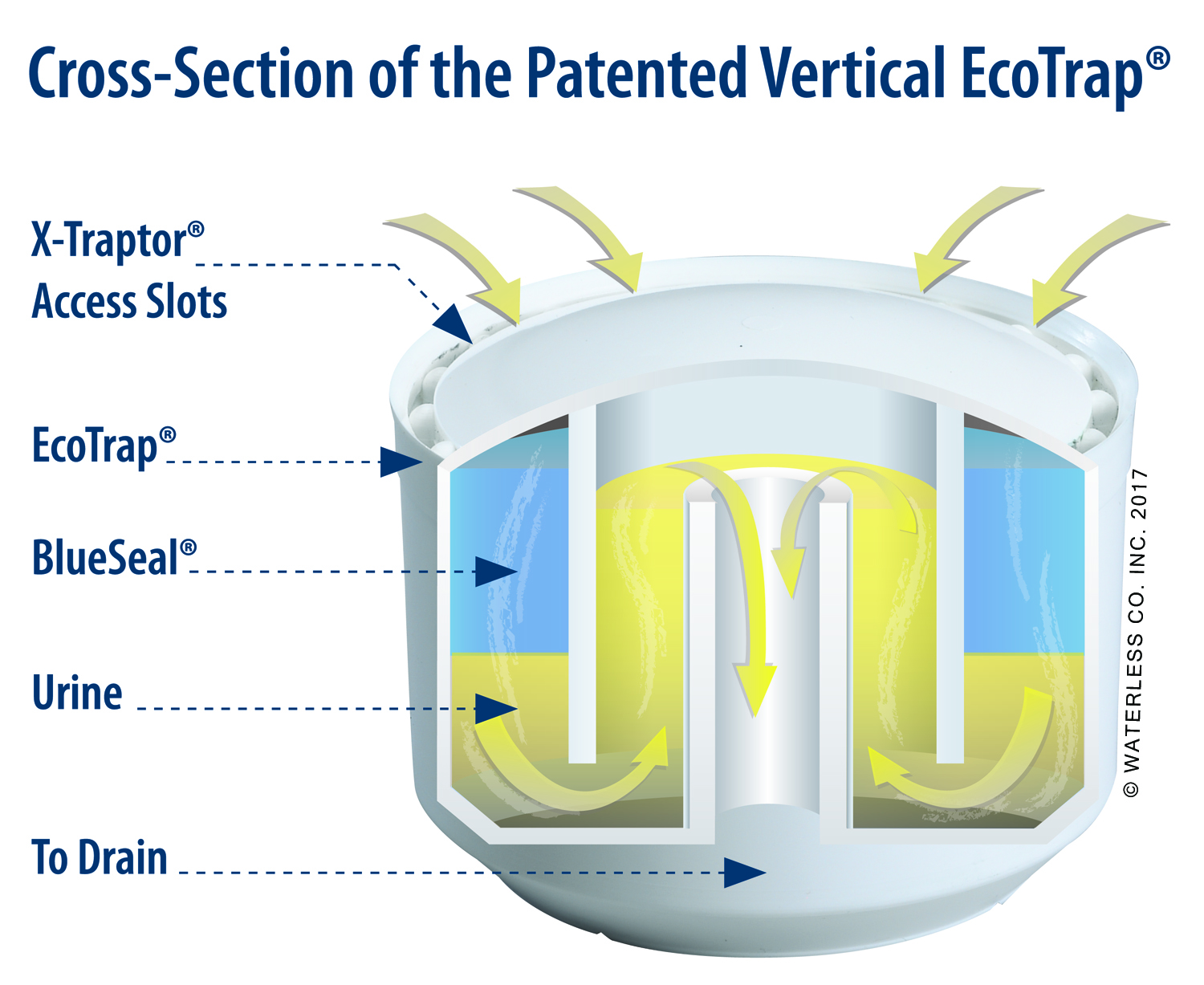Waterless urinals look like a conventional urinal, except that there are no flushing mechanisms and they require no water.
"Like their traditional counterparts, waterless urinals are made of similar materials and are offered in different colors and designs,” says Klaus Reichardt, managing partner of Waterless Co., a leading manufacturer of waterless urinals and related products, Vista, CA. “No-flush urinals can be installed virtually anywhere the conventional variety would be used.”
According to Reichardt, similar to conventional urinals, waterless units are plumbed to a standard drain line but do not use a conventional water-filled trap.
“Instead, waterless urinals use a vertical trap or cartridge filled with a thin layer of liquid sealant that sits atop the drain area of the urinal,” says Reichardt. “Urine passes through the trap/cylinder and sealant forming a barrier, preventing odors from escaping. Eventually, the urine, which is heavier than the sealant, flows into the drainpipe, allowing the urine to be drained.”
Reichardt says waterless urinals were first found in Europe more than 100 years ago. However, their popularity waned until about 15 years ago, as concerns about water conservation and sustainability mounted.
Today, there are approximately three or four manufacturers of waterless urinals in the United States. Most of the systems work the same; however, the costs to maintain and service the different systems can vary considerably.
Cleaning and Maintenance
Cleaning waterless urinals involves using a nonabrasive cleanser and wiping the interior and exterior areas clean. Abrasive cleaners and harsh chemicals should be avoided just as on flushed urinals as they can damage the trap/cartridge system and the urinal’s finish.
“Some manufacturers have developed their own products, specifically made for cleaning waterless urinals, which they recommend for use,” says Reichardt. “These products are specially made to protect the fixtures’ protective surfaces, which are designed to limit residual moisture and germ growth.”
Reichardt warns that except for one recently introduced waterless urinal system, large amounts of water should not be poured through the trap/cartridge as this tends to flush the sealant liquid down the drain and is actually not needed.
However, most manufacturers do recommend flushing the drain with a bucket of water while the insert is removed for changing.
“Usually, servicing the waterless urinals will be turned over to the facility’s cleaning crew also, who are called upon to re-fill the sealant as well as replacing the trap/cartridge,” says Reichardt.
As the urinal is used, small amounts of the sealant are drained into the waste line and need to be replenished. In a typical school, this amounts to about two refills per month.
To add the liquid sealant to the trap/cartridge, some manufacturers provide a “portion aid” device that comes with the sealant and accurately measures just the right amount of sealant required. This is then poured directly into the trap/cartridge. The entire process takes about 15 to 20 seconds.
The trap/cartridge will also need replacing about four times per year or every 7,000 uses, although this can vary depending on the brand. The process, which takes about three or four minutes, includes:
· Using a special tool designed to remove the cartridge.
· Slowly wiggling the cartridge out of position, emptying its contents down the drain,
and disposing of the cartridge
· Cleaning the drain opening and pouring approximately one gallon of hot water
down the drain
· Inserting the new trap and filling with sealant.
Although the maintenance procedure is similar on most waterless urinal systems, the costs of the replacement parts can vary considerably. For example, some brands’ trap/cartridge systems may cost only a few dollars while others can cost more than $40. In addition, some of these more expensive cartridges actually do not last as long as the less expensive ones, making them even more costly.
For more information on Waterless urinals, please contact a Waterless representative here.











